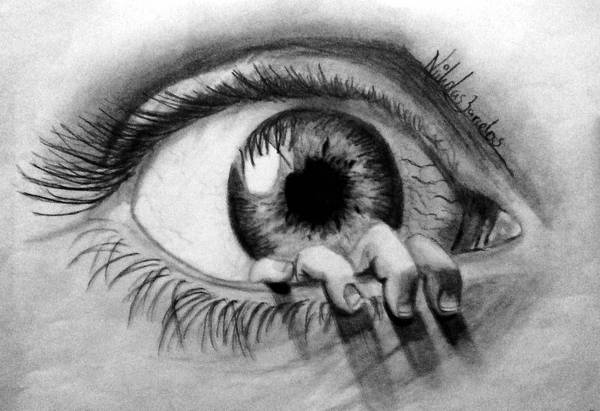How to draw in 3 point perspective narrated
Table of Contents
Table of Contents
Have you ever wanted to create stunning, lifelike drawings of buildings and urban landscapes? Look no further than 3 point perspective drawing! With this technique, you can give your artwork a sense of depth and realism that will leave viewers in awe.
Many artists struggle with drawing 3 point perspective because it can be challenging to understand the basic principles behind it. Additionally, it can be difficult to visualize where the three points of perspective should be placed.
Fortunately, once you understand the basics of how to draw 3 point perspective, the process becomes much simpler. Let’s dive into how you can master this technique and take your artwork to the next level.
To draw in 3 point perspective, you will need to understand the following concepts: vanishing points, horizon lines, and vertical lines. First, let’s define each of these terms.
Vanishing Points
Vanishing points are the points in space where parallel lines appear to converge in a drawing. There are two types of vanishing points: a one-point vanishing point for drawings with a single point of perspective, and two-point vanishing points for drawings with two points of perspective.
When it comes to three point perspective drawing, you will need to utilize three vanishing points. One point will be positioned above the horizon line, and the other two will be positioned below the horizon line.
When using three vanishing points, you can create artwork that appears to have height, width, and depth.
Horizon Lines
The horizon line is the point that represents the viewer’s eye level. In a drawing, the horizon line marks the point where objects begin to recede into the distance. This is particularly important in three point perspective drawings, where the horizon line will be positioned above, below, or in the middle of your drawing.
By adjusting the position of your horizon line, you can create different effects in your drawing. For example, a high horizon line can create the illusion of looking up at a tall building, while a low horizon line can create the illusion of looking down at a scene from above.
Vertical Lines
Vertical lines are the lines that run perpendicular to the horizon line. These lines help give your artwork a sense of structure and depth. In three point perspective drawing, vertical lines are particularly important because they help define the height of your subject matter.
When using three vanishing points, you can create artwork that appears to have height, width, and depth.
Conclusion of How to Draw 3 Point Perspective
Now that you understand the basics of how to draw 3 point perspective, you can experiment with this technique in your own artwork. Remember to position your vanishing points, horizon lines, and vertical lines with care, and don’t be afraid to play around with the height and angle of your drawing. With some practice and perseverance, you’ll soon be producing beautiful, realistic drawings that will take your audience’s breath away.
Question and Answer
Q: What is the difference between one-point, two-point, and three-point perspective?
A: One-point perspective utilizes a single vanishing point, typically positioned in the middle of the page. Two-point perspective uses two vanishing points, one on either side of the page, while three-point perspective uses three vanishing points, with one positioned above the horizon line and two positioned below.
Q: Do I need to use three-point perspective in all of my drawings?
A: No, three-point perspective is just one technique that you can use to create depth and realism in your artwork. Depending on the subject matter of your drawing or painting, you may also use one-point or two-point perspective, or even opt for a more abstract or stylized approach.
Q: How can I practice drawing in three-point perspective?
A: Start by sketching simple forms, such as a cube or a cylinder, using three-point perspective. Once you feel comfortable with the fundamentals, move on to drawing more complex structures, such as buildings or street scenes.
Q: What tools do I need to get started with three-point perspective drawing?
A: You will need a few basic supplies, including pencils, erasers, paper, and a ruler. Many artists also find it helpful to use a T-square or other specialized drawing tools to ensure accurate lines and angles.
Gallery
Isometric Drawing – NextGenCoryEasom

Photo Credit by: bing.com / perspectiva perspektive lukisan ppp kavalier oblik vanishing vogelperspektive punkt zeichenunterricht perspektiven voorbeeld fluchtpunktperspektive environmental brutality
32 Best Images About 3 Point Perspective On Pinterest | Architecture

Photo Credit by: bing.com / perspective point drawing city drawings pencil three draw above linear architecture landscape
How To Draw In 3-Point Perspective: Narrated - YouTube

Photo Credit by: bing.com / draw perspective drawing point eye school circle three line drawings worm worms 3d building examples step birds architecture comic sketching
32 Best Images About 3 Point Perspective On Pinterest | Cityscape

Photo Credit by: bing.com / point perspective drawing basics draw
How To Draw Using 3-Point Perspective: Simple Buildings - YouTube

Photo Credit by: bing.com / perspective point draw buildings simple using






